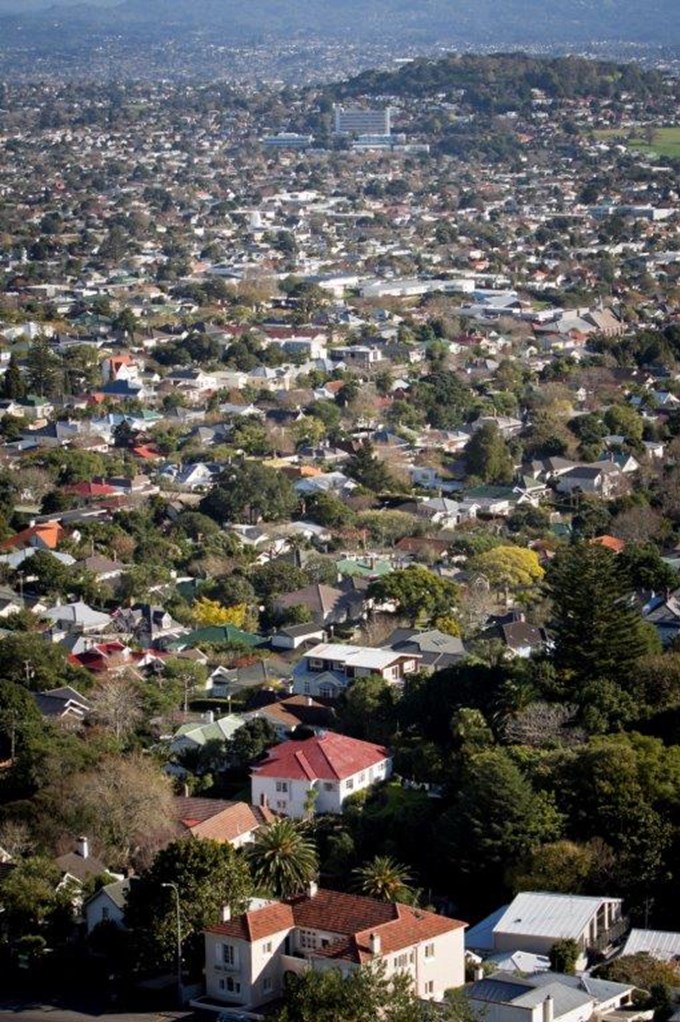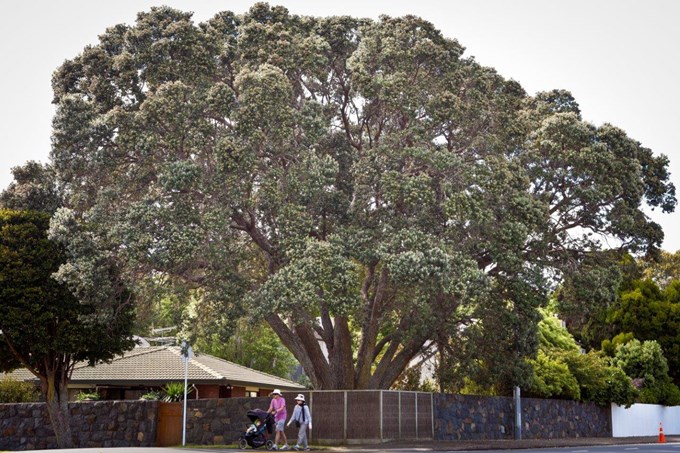Aucklanders love trees. We sit under them, play on them, pick fruit from them and many of us even have favourites throughout the city, but there are pressures and issues facing our city’s trees. Today, Auckland Council has released a strategy to address the challenges facing our urban forest.
Mayor Phil Goff says Auckland’s Urban Ngahere (Forest) Strategy sets out how we can all contribute to the expansion of our urban ngahere, address the unequal distribution of trees across the region and increase the benefits of a green city.
“The council is committed to enhancing our urban forest to make Auckland greener and deliver on the environmental, economic and social benefits that urban forests offer," Phil Goff says.
"These include enhanced stormwater management, air pollution removal, improved water quality, cooling to reduce the urban heat island effect, and ecological corridors to connect habitats and improve biodiversity. Trees make our city a more pleasant place to be and studies show they impact on the health and wellbeing of the community.”

Councillor Penny Hulse, Chair of council’s Environment and Community Committee explains that a key aim of the strategy is to increase Auckland’s average tree canopy cover.
“Despite efforts from Auckland Council to maintain protection, amendments to the Resource Management Act in 2015 lifted blanket tree protection in urban areas and removed protection for the vast majority of trees on private urban properties,” says Councillor Hulse.
“When considered alongside urban development, threats from pests, diseases and the impacts of climate change, our urban ngahere needs a special focus. The objective of our strategy is to have average tree canopy cover of 30 per cent across our urban area, and we’re aiming for all local board areas to have more than 15 per cent canopy cover. Put simply, we want more trees across all of Auckland.”
John Mauro, council’s Chief Sustainability Officer, says that tough decisions are needed to ensure we both protect and enhance the natural environment in urban areas as we intensify our growth.
“Balancing all the needs of a quality urban environment is a difficult task, but by focusing on knowing, growing and protecting, our Urban Ngahere Strategy will help us create a greener, healthier and more climate-ready urban environment."
Knowing, growing and protecting
The strategy establishes a clear framework to protect and grow Auckland’s urban ngahere to ensure a flourishing future.
Knowing
We need to know the status of our urban ngahere, the extent, number and distribution of trees, as well as their size, health and condition.
- Auckland Council has developed a tree asset database that allows information on trees to be recorded on a mobile device and viewed geospatially via the council’s GeoMaps. Council staff and contractors can record data like tree location, type and maintenance information during the maintenance of trees on public land. The database builds on information collected over a fifteen-year period and improves the quantity and quality of tree asset information. This is a significant step forward in improving our knowledge about our urban ngahere.
- This project pulls together all the data we need on trees like their condition, how they are managed and information on new plantings. The system has been designed for multiple users across the council and our goal is to eventually open this to the public and universities, so we can collectively gather more data on about our trees.
- The council is also looking to work with local boards to find ways to help educate people on the values and importance of our urban trees. So far, 13 local boards have provided funding to produce a more detailed report on their local tree cover, find new areas to plant and nurture new trees and undertake planting programs with the local community.
Growing
Auckland needs to grow its urban ngahere to multiply the benefits it provides and address distributional inequity.
- Mayor Goff’s ‘Million Trees’ project is a great example of a planting programme in Auckland. The project has seen more than 648,000 new, predominantly native trees and shrubs planted across the region, 255,513 in urban areas, with 460,000 scheduled to be planted in the 2019 season, delivering on the promise to plant a million trees in this term of Auckland Council. There has been a great community response to the tree planting campaign with a broad range of groups contributing, including schools, service groups, Watercare and the corrections service.
- The council also partnered with Vector to plant new trees and shrubs in the Puhinui Reserve on the edge of the Manukau Harbour. This project is improving biodiversity and tree cover in this large coastal reserve. A similar program is underway in Totara Park which is another site for large planting projects.
- Other council initiatives to help expand our urban tree canopy include planting initiatives with local boards, iwi, schools, service and social sector groups, private entities, New Zealand Transport Agency and developers.
Protecting
Protecting our existing urban ngahere is crucial to safeguarding the added values and benefits mature trees provide.
- One of the principles in the strategy is to use both regulatory and non-regulatory mechanisms to protect trees. The regulatory mechanisms in place relate principally to the Auckland Unitary Plan, which contains the rules to protect certain areas of vegetation and individual trees. There are also other mechanisms to protect trees, like legal covenants, but these are mostly outside the jurisdiction of the council. Non-regulatory mechanisms include increasing people’s awareness of the benefits trees provide. It is hoped that more awareness will increase the protection and value people give to trees.
- Auckland Council is currently undertaking a review of the notable tree schedule. This is a positive step to improve the accuracy of the list.
- In addition, the council’s natural environmental targeted rate will contribute an additional $311 million over the next 10 years to help protect our native flora and fauna.
Mātauranga Māori /Knowledge and Understanding
The urban ngahere is an important part of Tāmaki Makaurau / Auckland’s cultural heritage. Independent Māori Statutory Board Member Renata Blair, reminds Aucklanders of the importance of native ngahere to mātauranga Māori (knowledge and understanding). Member Blair says that trees create a cultural connection to place and history.
“Tāne Mahuta is our Atua and we must protect the forest as it gives the whole city sustenance,” says Member Blair.
“Remnants of native forest represent traditional supermarkets (kai o te ngahere), learning centres (wānanga o te ngahere), the medicine cabinet (kapata rongoā), schools (kura o te ngahere) and spiritual domain (wairua o te ngahere). Trees also represent landing places of waka (canoe) and birth whenua (to Māori, it is customary to bury the whenua or placenta in the earth, returning it to the land),” says Member Blair.
Protect it, so it can protect us
Mr Mauro reminds Aucklanders that climate change threatens our urban ngahere. Changing seasonal rainfall patterns, more severe weather events, and increased susceptibility to pests and diseases all have the potential to negatively impact our city’s trees.
“Auckland is projected to experience increased occurrence of drought and reduced soil moisture,” says Mr Mauro. “This means we must better understand the threats to our urban ngahere and be prepared to protect it as it protects us by providing shade and enhancing our resilience to an increasing number of hot days.”
What can you do?
Successful implementation of the strategy will require close collaboration with diverse partners across Auckland, including local boards, community groups, charities and businesses. Area-specific implementation is essential to ensure the strategy’s high-level actions are defined and implemented in a way that matches the needs of each local area.
Councillor Hulse encourages neighbourhoods and communities to consider planting days in their areas.
“Community planting days are a wonderful opportunity for people to help grow our urban ngahere.
"61 per cent of Auckland’s urban ngahere is on private land; individual and community action on private property can really make a bit difference. A great family activity could be to look at opportunities to grow and protect trees and vegetation on their own properties.”
He whakatupu ngātahi i te ngahere ā-tāone o Tāmaki Makaurau e matomato ai te hua ā ngā rā e tū mai nei.
Together, growing Auckland’s urban ngahere for a flourishing future.



